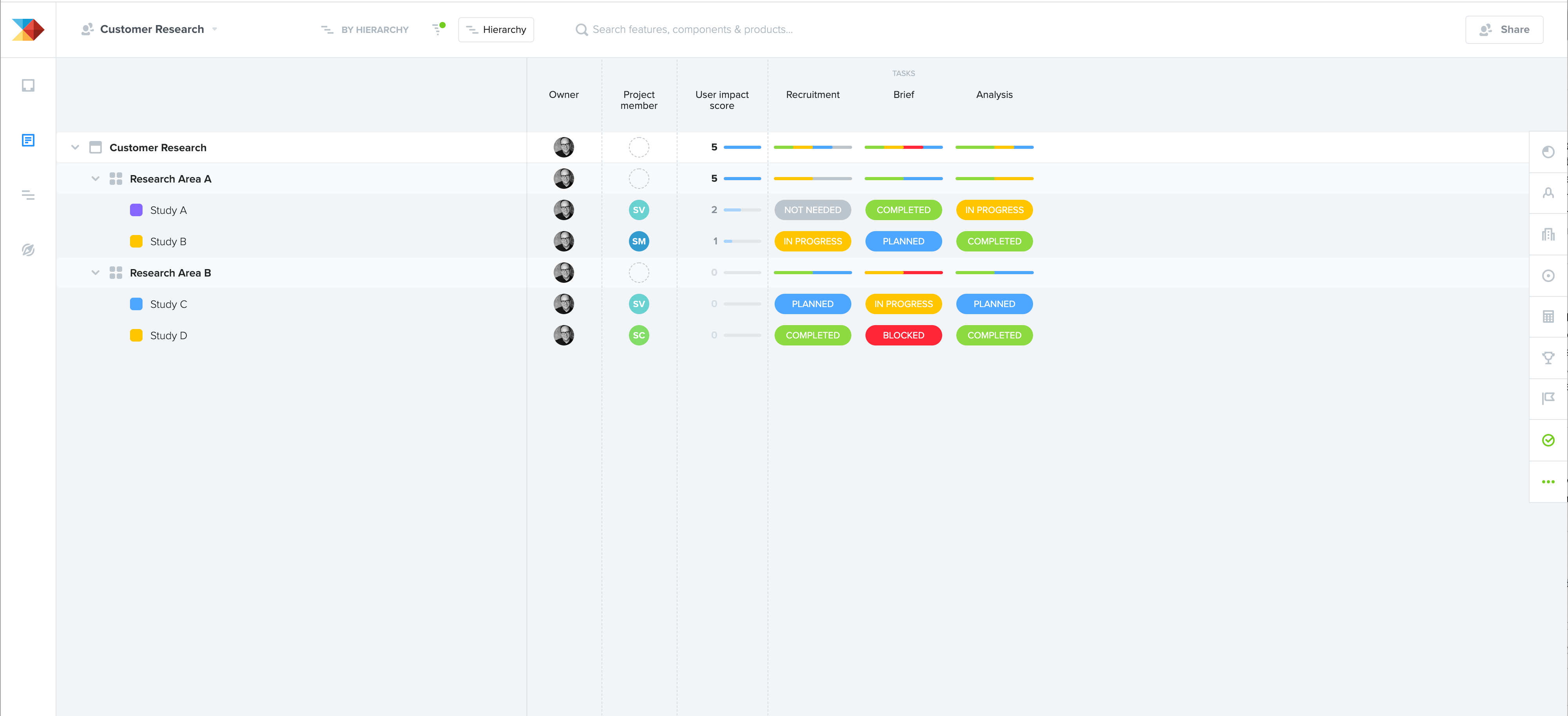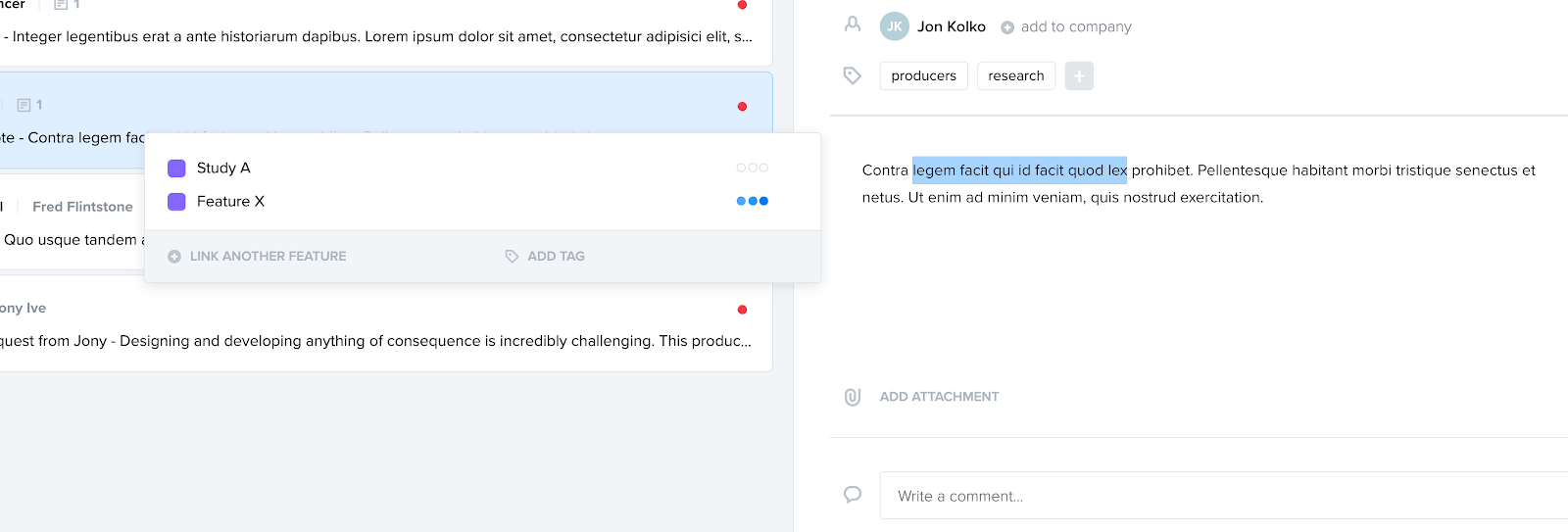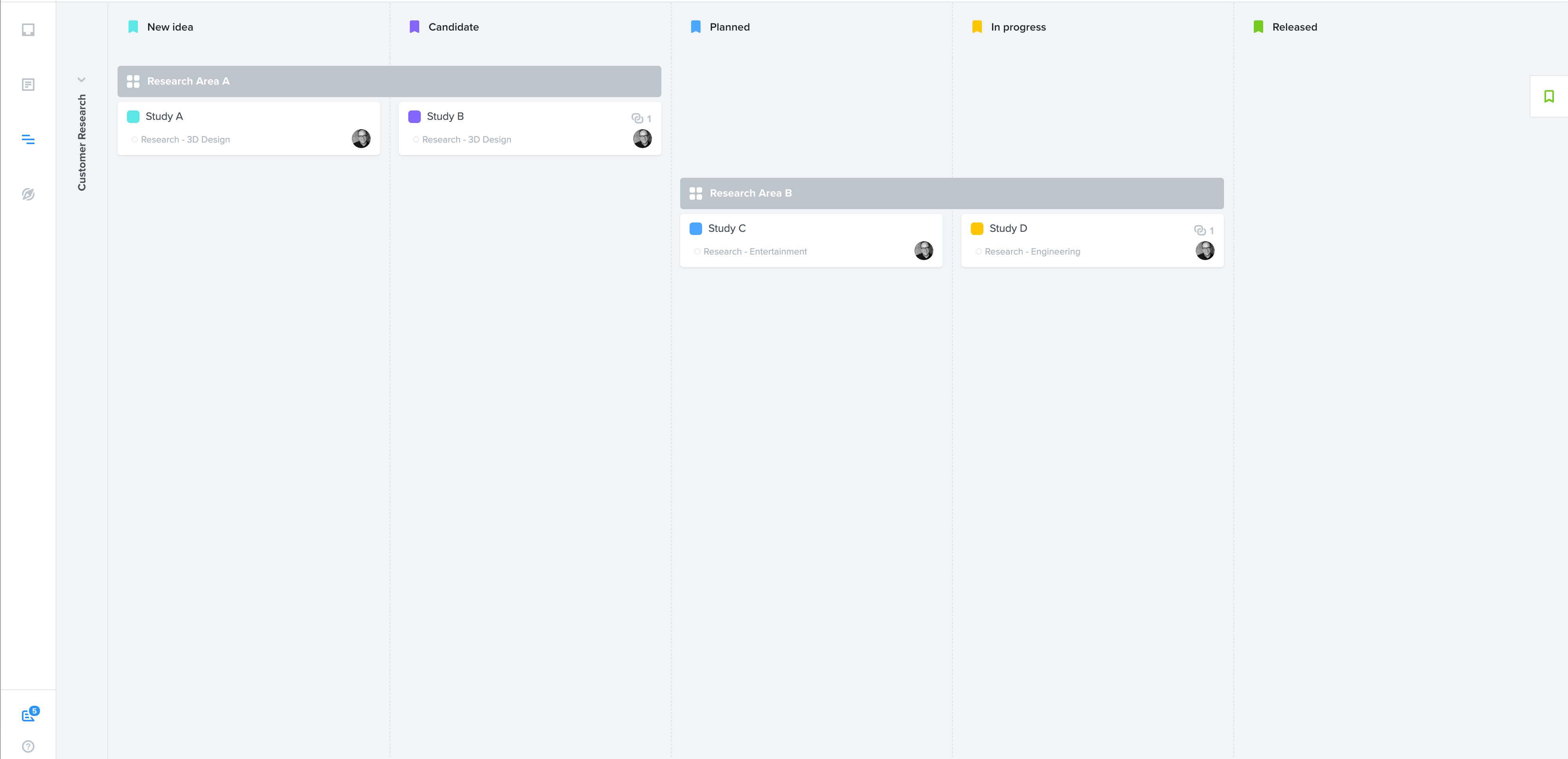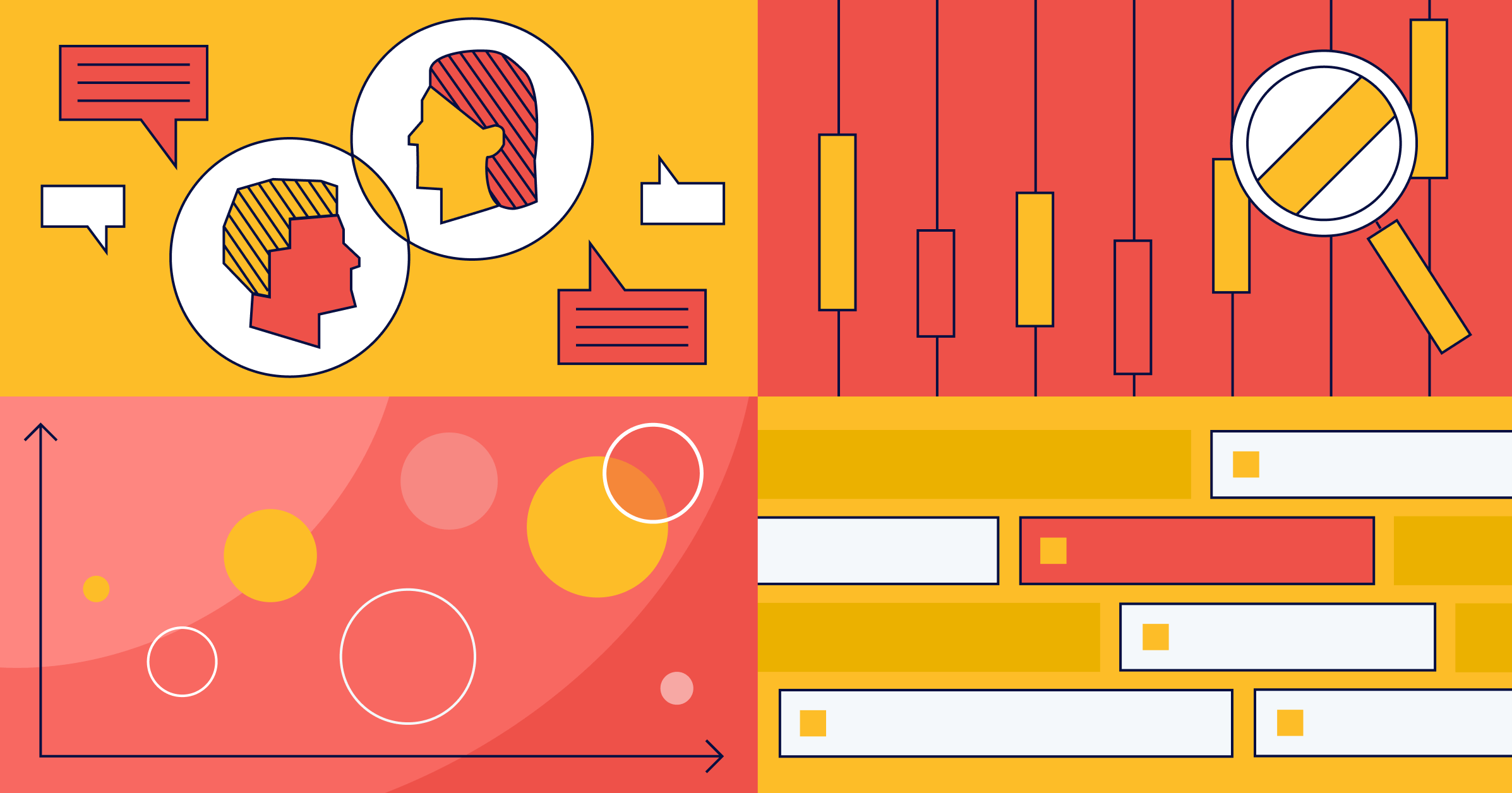How user research teams can use productboard

From my personal experience, every great product team should have a user researcher (or a team of user researchers). While Marty Cagan and others talk about the triad, I’m a fan of four-legged stools, not those three-legged tippy camping chairs (no offense Marty) 😀. And frankly, researchers (and even great data people) just make everything better for product managers. So here’s to multi-legged stools!
As Steve Portigal said in his fantastic book Interviewing Users: How to Uncover Compelling Insights, “To design for users, you must begin with a deep understanding of users. If you don’t already have that understanding, you need to do some form of user research.” And as you may know from our content on Product Excellence, creating deep user insights is critical to keep a pulse on what’s important to your customers, seize critical opportunities, and avoid wasting time building the wrong features.
For this particular article, I’m going to focus on the needs of dedicated research teams — those working on broad research efforts rather than specific feature-level product discovery. While there are aspects of productboard that can work for every type of research team, the needs of individual teams can vary. Here are some ways I might distinguish between research teams and their use of productboard:
Broader user research teams
- Inform products teams of what’s essential along with key insights and actions they can take. (Insights board)
- May use features to collect all relevant feedback and append to one or more features for feature-specific teams to use as an input into their discovery. (Features board)
- May use user impact score to determine what research is driving the most value. (Features board)
Feature-specific teams doing discovery
- Use insights to inform design work and decisions about what to build. (Insights board)
- May use insights attached to a particular feature and generate further insights via a Portal card. (Features board)
- Use user impact score to make decisions about what to build and importance to customers. (Features board)
For dedicated research teams doing broad user research, there are often some common elements that are created and produced as part of research work. These may include:
- A brief outline of work to be done and associated goals
- Raw data and notes from sessions
- Assets like videos, photos, and take-homes such as diaries
- Outcomes of research
- Recommendations
So, where do you put this all, and how can you make it both accessible for your research team and helpful to product teams? Here are some ideas:
Managing research work in productboard
Within productboard, create a Product dedicated to your research team. For my example, I’m going to call this Customer Research.
Within that Product, organize your major research areas as Components. These could be areas in your company, product divisions, major research areas — the sky’s the limit. In this example, I’m just calling them Research Area A, Research Area B, etc.

Within those Components, use Features to represent each of your research studies. It’s best to come up with a standard way to name them so everyone can find them easily.
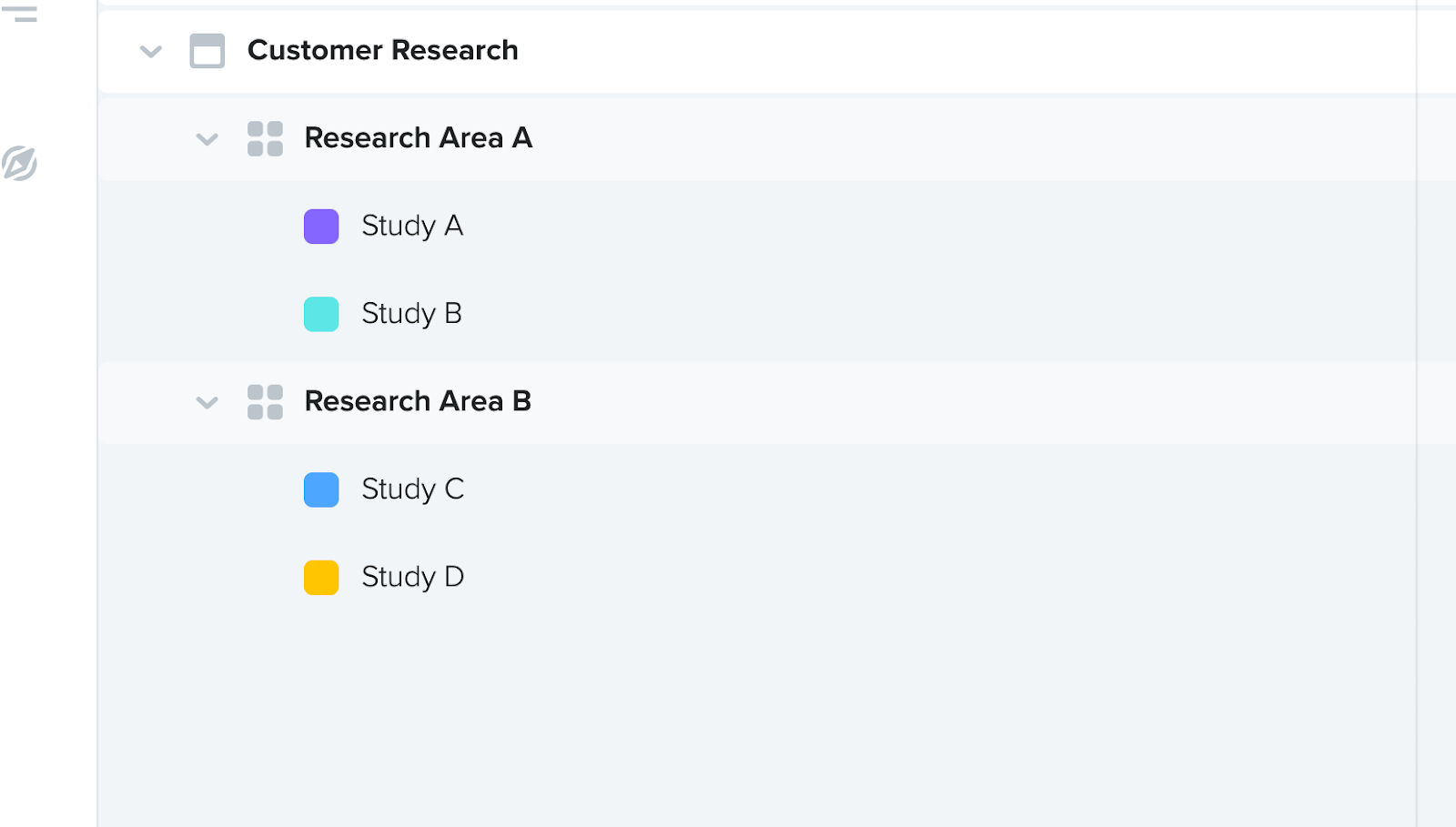
Within the Feature Detail, list your brief (or a link to it), add your raw notes and data (or a link to it), and attach relevant files and assets (or a link to it). Apply all the great feature attributes you would for any other productboard feature like releases, owners, teams, objectives, custom fields, and tasks. And don’t forget to use statuses to reflect the state of the work your research team is doing.
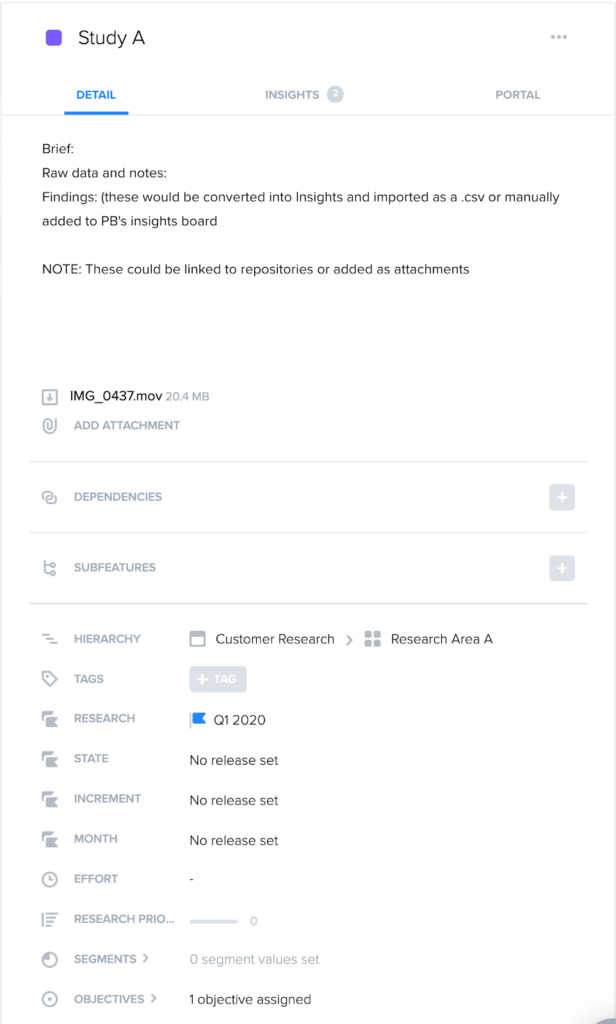
On the Features board, use columns to help provide a system of record for all your work, progress, assignments, etc.
Now here’s where it gets cool — turn findings to Insights
At the end of your research, there are findings. These are the actionable items that help to summarize the research undertaken and key learnings.
First, add the Insights to productboard. Leverage tagging, owners, and comments to help product managers get the full value of your work, and to add an extra layer of data when it comes to establishing user impact scores and prioritizing the product roadmap. Maybe you want to use a tag to identify research overall, the type of research, or the audience. Then you can use Collections to organize easy ways to get to that research.
Second, attach each Insight to the relevant research study (the features you set up earlier). That way your team and anyone else looking for a holistic overview of each study has access not only to the inputs and raw outputs of your research work, but also the output and actionable next steps — all in one single location.
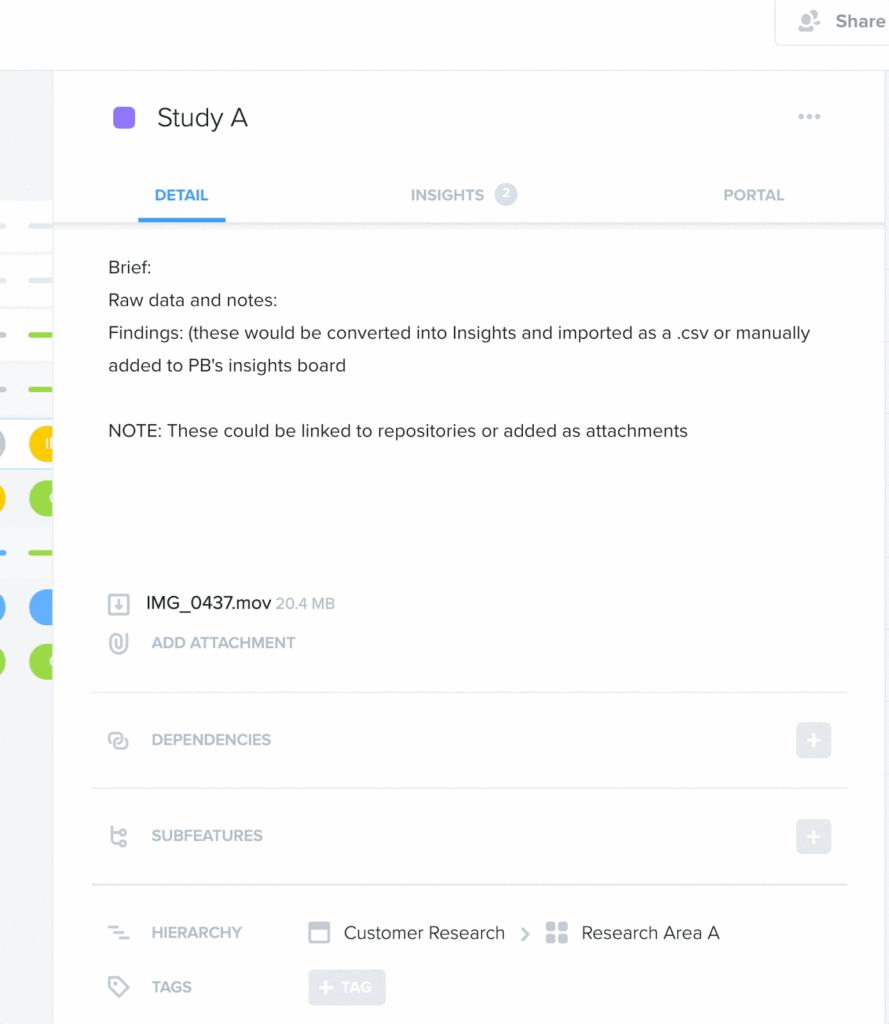
Third, each Insight can be reviewed and processed by the product team and linked to a hierarchy they use for prioritization (you did know that you can link insights to multiple components or features in productboard, right?)
Lastly, communicate and bring transparency to your research work
Use the Roadmap board to show the state of the research work your team is doing. Help others on your product team and across the organization get transparency into the status of your work, timelines, and progress towards objectives.
Use Release Groups to better organize on a cadence that’s relevant to your team and their work.
But what if I prefer to use my own tools to house research?
It’s perfectly fine to not use the above. You can opt to simply push insights from your research as key takeaways for your product team and store the broader work and conclusions elsewhere (e.g. Google Drive, Dropbox, Sharepoint, etc.).
What you can do in these instances is to look for ways to automate the sharing of insights with the product team.
- Use our import option to bring notes from your research directly into productboard with all the details and pre-set tags. You can also assign notes to the relevant PM.
- Integrate with Zapier to monitor a folder in Google Drive so when new documents are added, they get created automatically as a note in productboard. You can do this in Dropbox and other tools as well.
- If you are using a dedicated research platform like Dovetail or EnjoyHQ, explore ways to share the outputs of your research. You can import them into productboard either manually or automatically after you’ve gone through your findings with the team, and link them to features to help support product decision-making
What are your teams doing when using productboard for user research activities?
I’d love to hear how you are leveraging productboard to conduct better user research. Feel free to drop me a note at scott.baldwin@productboard.com and we can find a time to chat!


